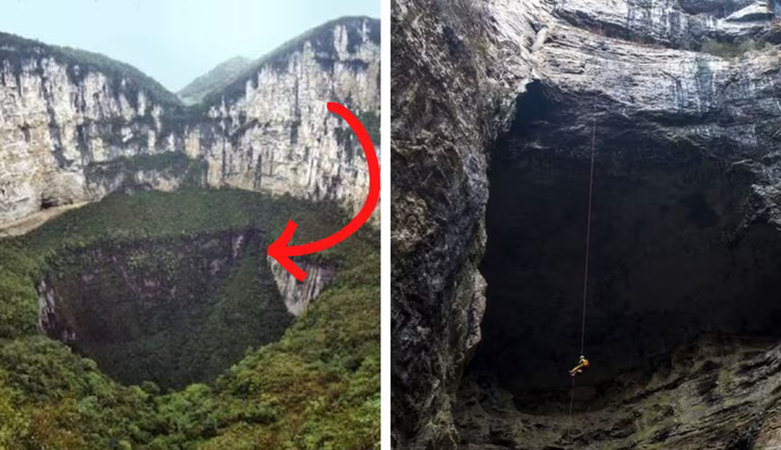The gateway to the other world in China...the deepest hole in the world that was formed over more than 12 thousand years

Specialists discovered the deepest hole in the world, which is called the Heavenly Hole, in 1994 in Fengjie Province in China. This hole is characterized by being home to many rare plants and animals, which makes it one of the most important places that attract tourism in that region.
Specialists discovered the deepest hole in the world, called the Heavenly Hole, in 1994 in China. This hole is home to many rare plants and animals.
The Celestial Crater is found in a large karst area made up of limestone, and is thought to have formed gradually over the past 128,000 years.
The crater is known as xiaozhai tiankeng, where tiankeng means heavenly crater in Chinese, and refers to a very specific group of geological structures.
The Heavenly Crater is found in a large karst area consisting of limestone, and is believed to have formed gradually over the past 128,000 years. It is approximately 537 meters in diameter and has a depth of between 511 and 662 metres. During heavy rains, a waterfall can sometimes be seen flowing down the walls of The hole is steep.
Under this hole, an 8.5-kilometre-long underground river passes. The river extends from the underground Tianjin Strait before reaching the vertical slope of the Meigong River, where the underground water system forms a 46-meter (151 ft) high waterfall.

The Heavenly Hole is distinguished not only by being the deepest hole in the world, but also by containing 1,285 species of plants recorded in its depths, creating a thriving, unique and rare ecosystem, where ginkgo, a rare type of tree, can be found, in addition to many rare animals.
The crater is known as xiaozhai tiankeng, where the word tiankeng in Chinese means heavenly hole or sky hole, and refers to a very specific group of geological structures.
It is worth noting that there are several conditions for the word “tianqing” to be applied to any hole, as the basin must be 100 meters deep with a river flowing through the bottom, and all “tianqing” are composed of carbonate rocks, and the rock must be above sea level. It must be dense and free of layers of impurities. Heavy rainfall is also required to form these structures, which in turn helps in the formation of its underground rivers. All of these things make Tianqing rare.
It is also stated that although the term refers to any pit within these parameters, of the 75 pits identified, 50 of the largest are in China, hence the Chinese term becoming the common name for such structures.
Source: websites

